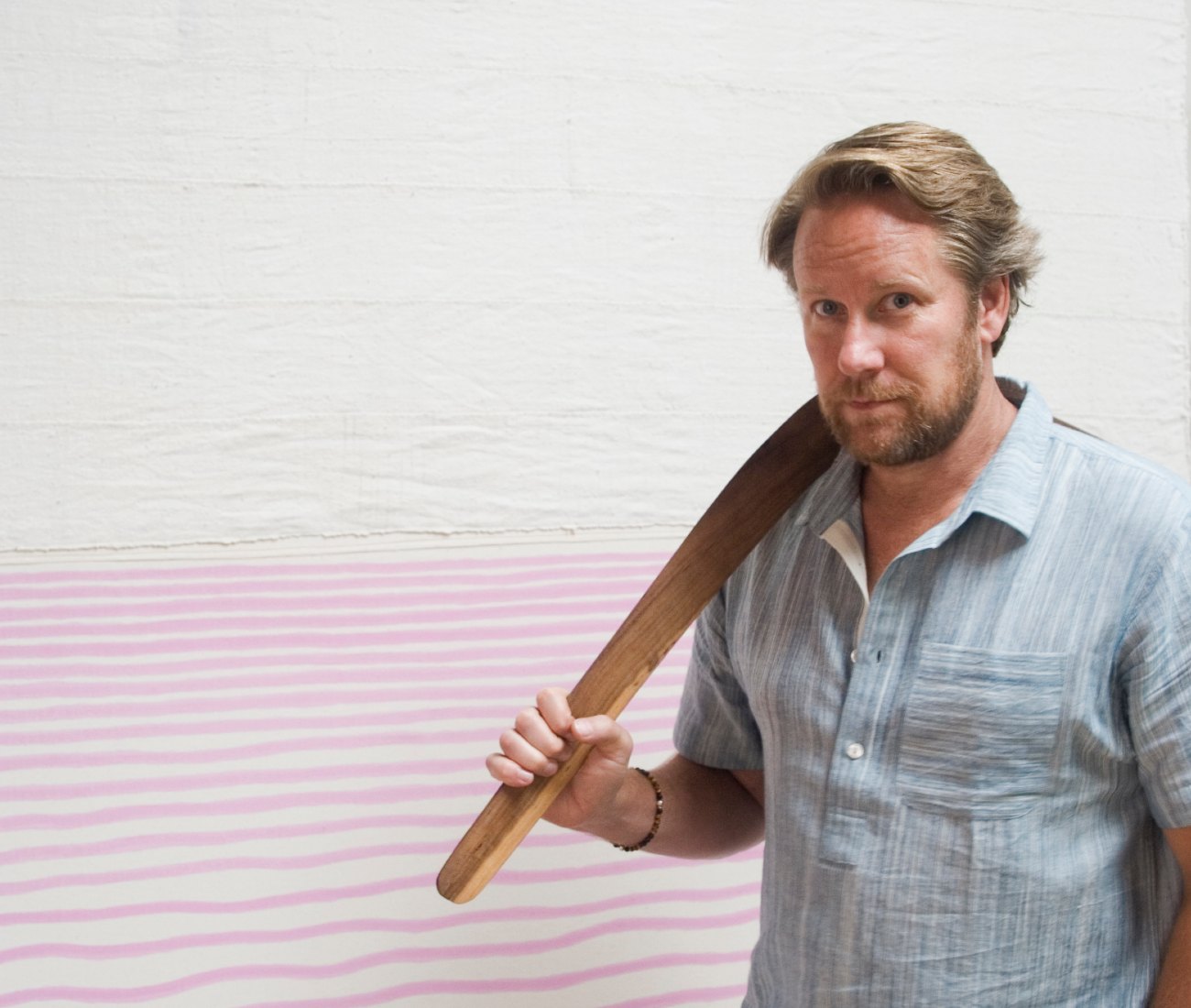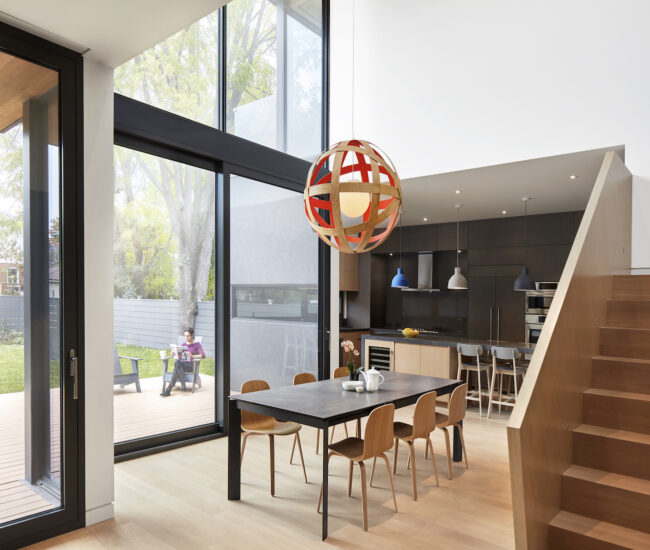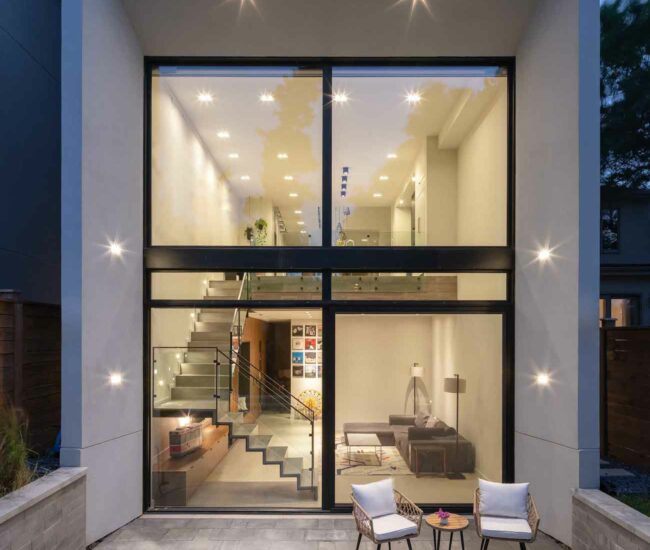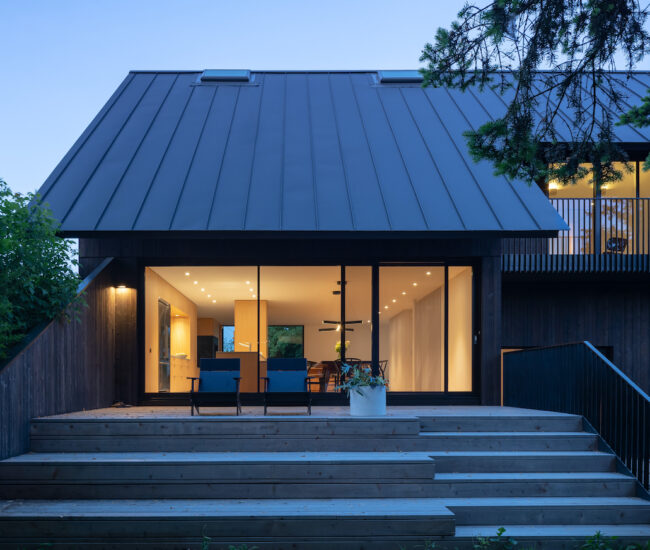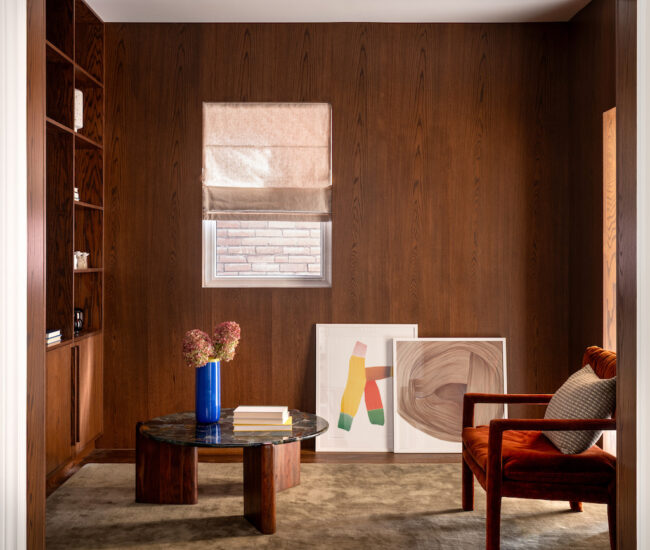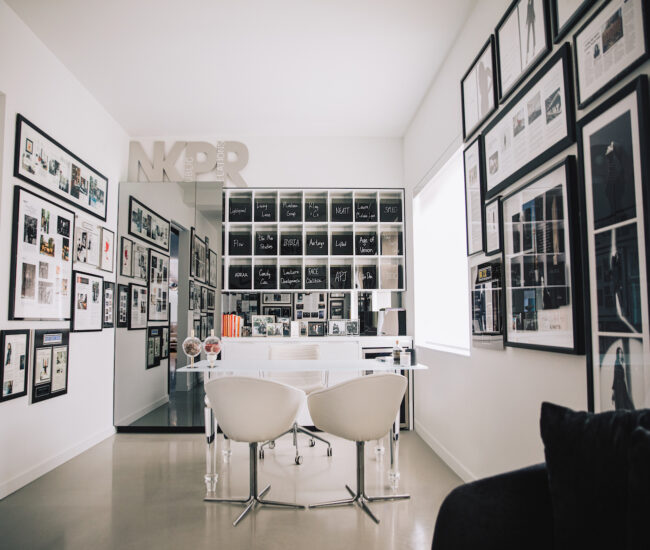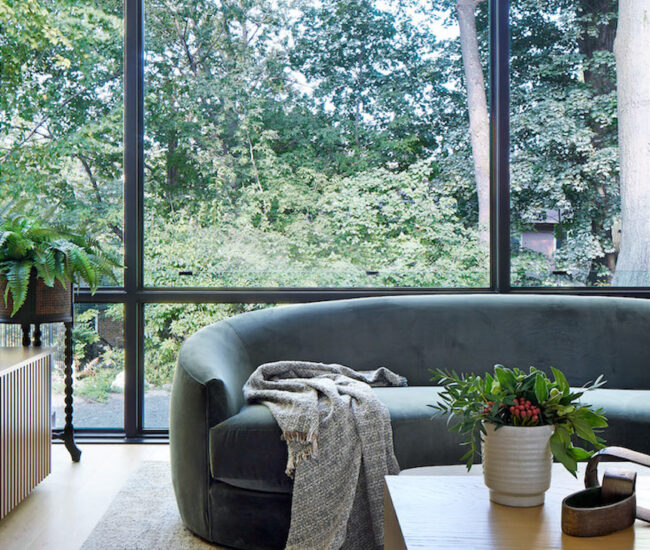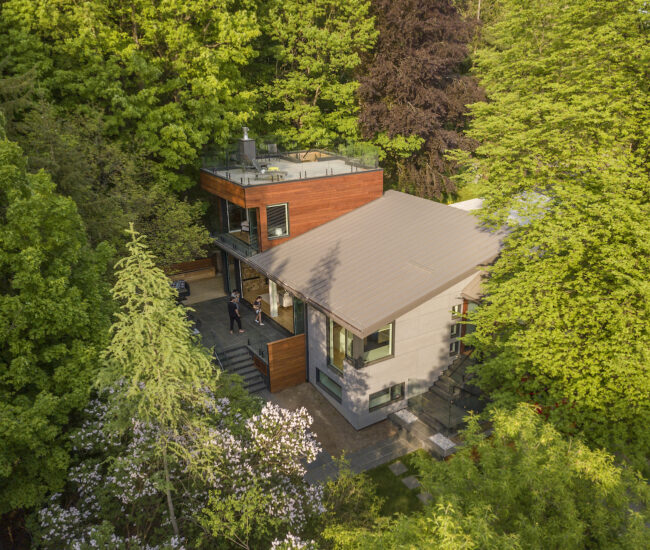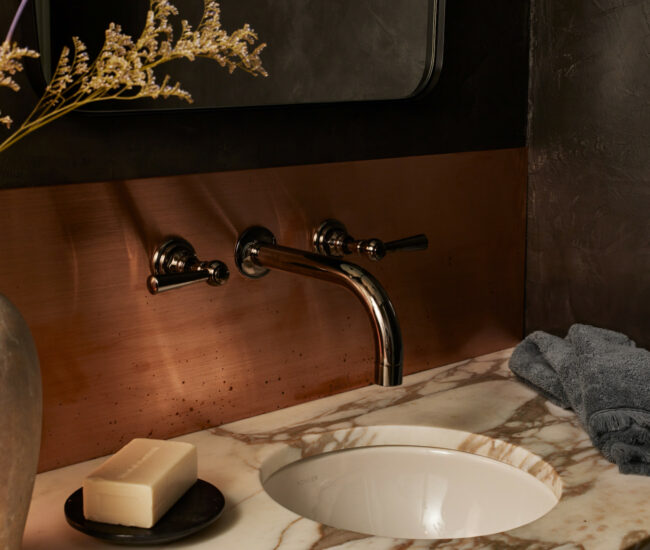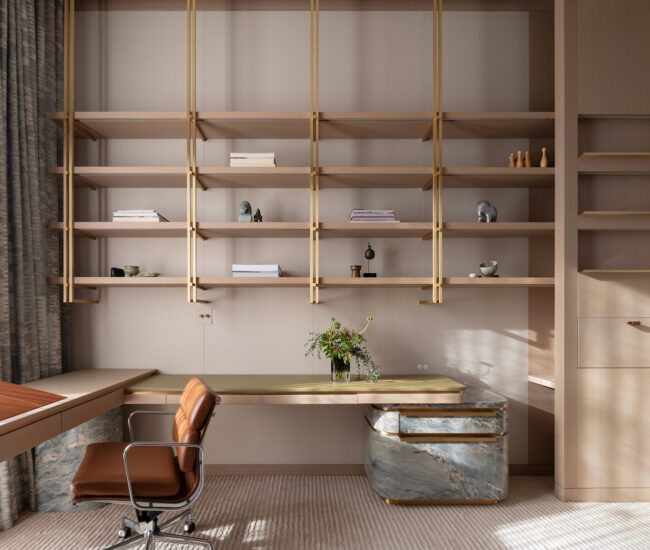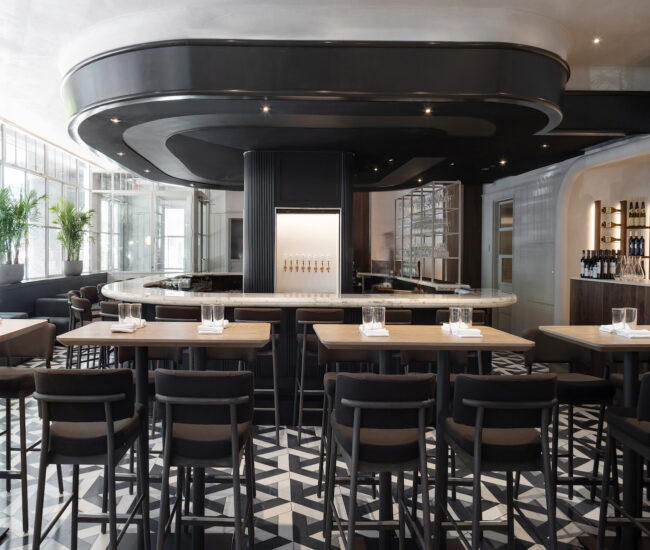Show Us Where You Live: Alex Jowett’s Loft, Studio and Atelier
Full of art, textiles and works-in-progress, this loft is live-work taken to a new level
Alex Jowett has managed the ongoing disruption of day-to-day life better than most. He already lived and worked from his West End loft – in the same complex as ACDO’s Abe Chan – where he produces artwork that’s shown in local designer and curator Alison Milne‘s gallery and Vancouver’s Elan Fine Art, and runs his design shop, Atelier Nomade, selling Moroccan rugs, handmade leather ottomans and other art and design objects. He’s also part owner, designer and creative director of Haathi House, a local jewellery label.
Jowett confesses he has a hermitic streak as a result, which made for an easier transition into lockdown life. Plus, his loft was already flush with artwork and textiles – much of it for sale through Atelier Nomade – and well-tailored to his preferences, tastes and obsessions. Given the abundant natural light, high ceilings and piles of rugs, it’s no wonder Jowett compares his home to an open market. Below, he walks us through his abode, where he’s blurred the line between living and working.
The interview has been edited down for length and clarity.

Designlines: Who lives with you?
Alex Jowett: It’s just myself and my daughter, India, who is five going on 15 and rules the roost.

Designlines: What part of town is your home located and how long have you lived there?
Alex Jowett: I live in Brockton Village in what was originally – and still is somewhat – an artist co-op townhouse complex. I had to move from my old loft as the building went all commercial and this live-work place was perfect for me. The upper level has a mezzanine where I work on my art, and almost every room has rugs and other textiles that are for sale, as well. For me, living and working are really part and parcel of the same thing, so I make it all as comfortable and inviting as can be.

Designlines: How old is the home or what style is it?
Alex Jowett: I’m honestly not sure when the place was built. I heard that the complex was originally a rope twining factory that was bought by a group of artists in the ‘80s and converted into apartments and studios. I rent, but if I bought it I would probably only redo the kitchen as the place is ideal for my needs currently. My particular unit is about 170 square metres, has three large skylights and a 7-metre wall, so it is very open concept. My bedroom is wide open, so aside from the bathrooms, India has the only door in the place. I wish I had a rooftop deck, but there are enough parks nearby so it’s not a big deal.

Designlines: What are some of your favourite aspects of the home?
Alex Jowett: The light! I can only work on my art pieces under natural light, so this place allows me to work all day. Watching the light move throughout and come in different windows as the day progresses never gets boring. I also love the openness. It makes me feel like I live in a contemporary Moroccan riad in the heart of Toronto.

Designlines: How did your relationship with your home change during the pandemic?
Alex Jowett: Since I work from home and tend to be a bit of a hermit, my day-to-day life didn’t change enormously. The life of any artist, designer and sole proprietor is full of uncertainty, so things carried on more-or-less as they did before, albeit with heightened awareness of all the uncertainty and anxiety.
That said, I have noticed a shift in some things. Myself and a number of artists I know have seen an uptick in sales through all this, which has been a welcome thing. I attribute it to all the people who were accustomed to going out multiple nights a week for dinners, shopping and whatever else, and who are now stuck at home staring at their walls. They may have had more money in their pockets, so they pulled the trigger on buying art that they may have been holding off on buying previously.

Designlines: Moving forward, with home-time now more important than ever, are there further changes you would like to make to your living environment?
Alex Jowett: My place is always a work in progress. I am constantly changing the art on the walls, the rugs on the floor and so on. I also hunt for interesting furniture and textiles – I currently have an Asafo flag addiction – so my place will always evolve and change on an almost weekly basis.
One thing people almost always say when they come into my place is that there is so much to look at since it’s full of contemporary and antique, high and low objects. I sometimes aspire to a pared-down elegance, but in reality I think the most comfortable and enjoyable homes are the ones with the most personal character.

Designlines: Creativity and business wise, what strides were you able to make during the enforced time off?
Alex Jowett: I have often struggled with the notion of growth and the pros and cons of having a storefront, but seeing all the changes and struggles that have come with the pandemic has made me realize that my modest, quiet life is fine. I think we would all be happier making more money, but at what cost? In my day-to-day life I am able to remain creative, work on projects that are completed in a week, month or even years in the making and keep it interesting by not doing only one thing. I am, I believe, the leading expert on Moroccan rugs in Canada and am working on projects that will highlight them as some of the most artistic and wonderful weavings in the world. At the same time I get to continue my personal art practice, which sells worldwide. I don’t think I would be able to continue to do those things if I had a dedicated storefront.
Also, my artwork tends to focus on philosophical notions of solitude, meditation and so on. In many ways, I am feeling more relevant these days as many people have been forced to deal with these things that my art practice has long focused on – maybe that’s another reason why my artwork has continued to sell.

